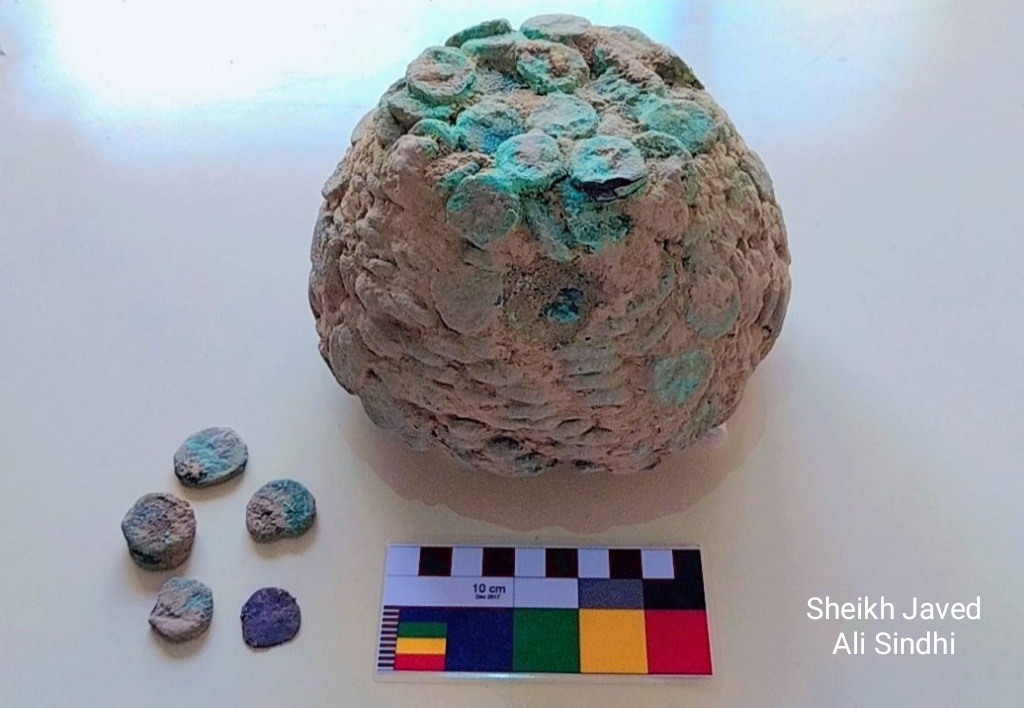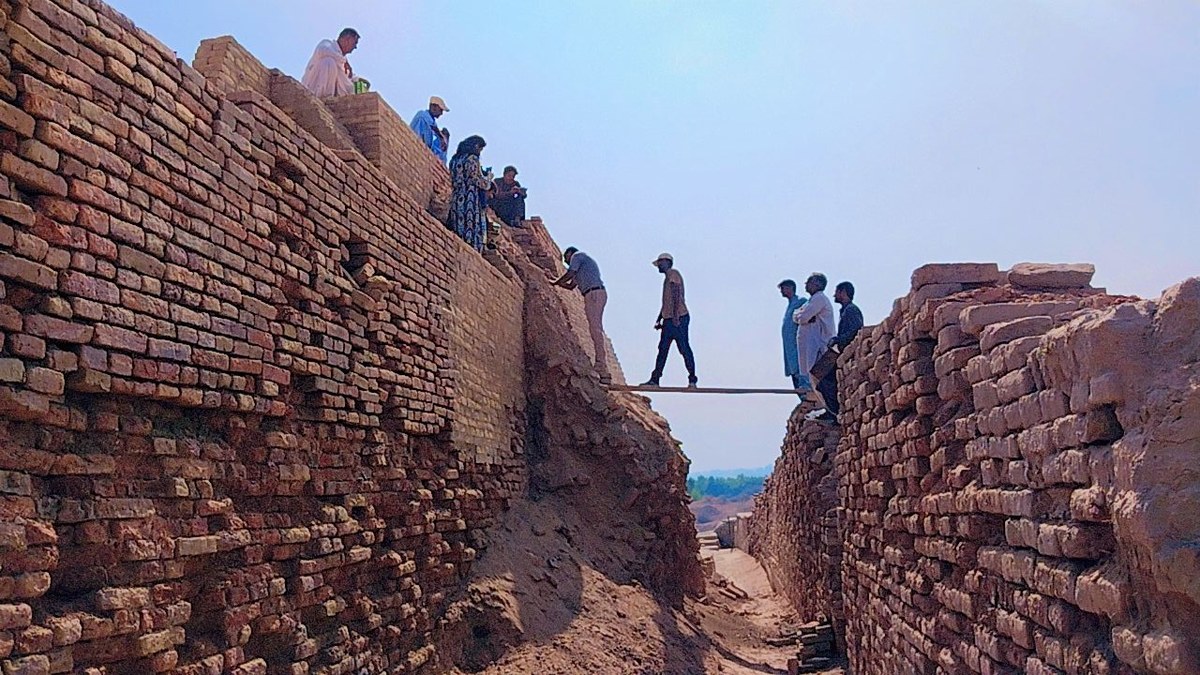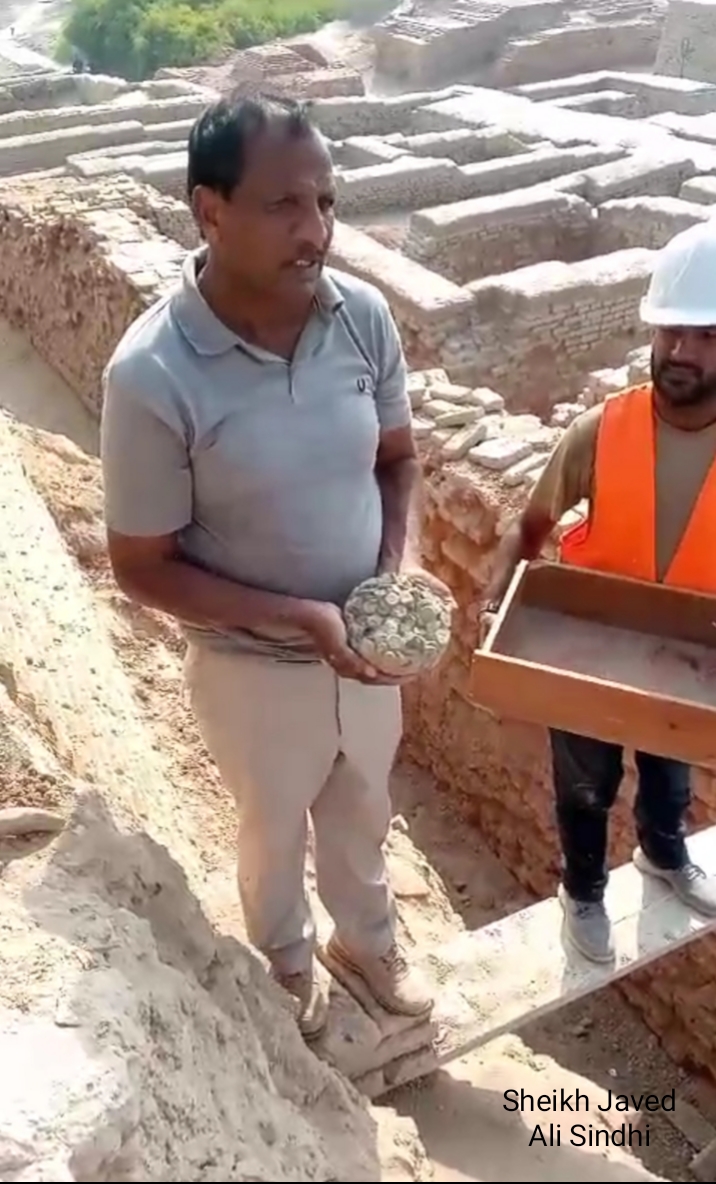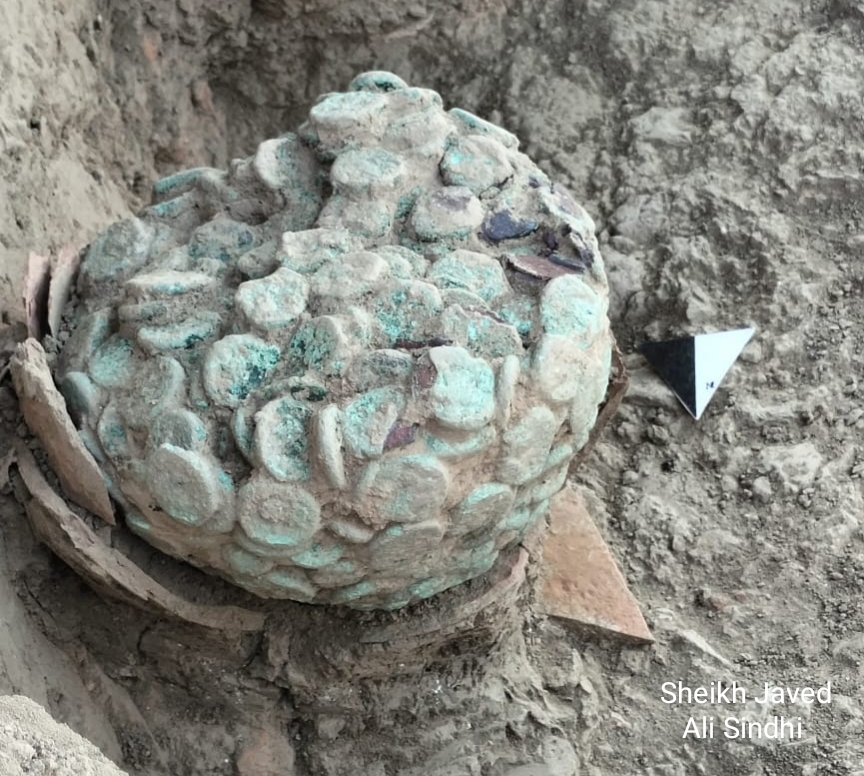KARACHI: Authorities in Pakistan said on Saturday they had discovered hundreds of coins at a United Nations Educational, Scientific and Cultural Organization (UNESCO) world heritage site in the southern Sindh province, dating back to the Kushan era in the Indus Valley.
Mohenjo-daro, flourished around 2,500 BCE, stands as the largest settlement of the ancient Indus Valley civilization. It rivalled contemporaneous cities in ancient Egypt and Mesopotamia, boasting a peak population of 40,000 before its abandonment around 1,900 BCE. The ancient city was designated a UNESCO world heritage site in 1980.
Situated on the banks of the Indus River in Pakistan’s Larkana district, the sprawling city covers over 620 acres of land. The first excavation on the site was conducted in 1921-22 and archaeologists such as R. D. Banerji, John Marshall and Ernest Mackay unearthed a total of 4,348 coins from 1922 to 1931, which were subsequently transferred to different museums in united India.
A preservation effort led by Sindh archaeology department recently led to the discovery of hundreds of coins dating back to the Kushan era.
“A team formed under the direction of DG Archaeology Sindh Mansoor Ahmed Kanasro and supervised by director Mohenjo-daro Syed Shakir Ali Shah recently discovered hundreds of coins in a terracotta bowl from Room no 29-A on Divinity Street during preservation efforts,” Shaikh Javed Ali Sindhi, a research scholar who was part of the excavation team, told Arab News.

This photo shows coins dating back to the Kushan era of the Indus Valley civilization discovered at the historic site of Mohenjo Daro in Larkana, Pakistan on November 17, 2023. (Photo courtesy: Supplied/Shaikh Javed Ali Sindhi)
“The coins are adhered to each other due to the immense heat they have endured over the centuries, making an exact count at this point of time challenging. However, their weight is approximately 5.5 kilograms, and they are estimated to be in the hundreds.”
Sindhi said the coins had been sent to the Mohenjo-daro laboratory for the purpose of cleaning to help researchers assess them.
The preservation effort was initiated to address the impact of last year’s catastrophic rains and floods in southern Pakistan, particularly in the Larkana region where Mohenjo-daro site is located. The site had suffered water damage from the relentless monsoon rain.
Mohenjo-daro, after being abandoned around 1,900 BCE, eventually succumbed to earth and the forest cover, according to Sindhi. Subsequently, the Kushan period saw the construction of a city over the remains, complete with a stupa where pilgrims would present coins to the Buddhist monk living around it.

Employees of the Sindh government work at the historic site of Mohenjo Daro in Larkana, Pakistan on November 17, 2023. (Photo courtesy: Supplied/Shaikh Javed Ali Sindhi)
“These coins belong to the same Kushan period, dating between 2nd century AD and 5th century AD, and were discovered in the vicinity of Divinity Street near the Stupa,” he explained.
The unearthing of these ancient coins marks a significant discovery after nearly a century, according to the research scholar.
“Once cleaned, these coins will offer valuable insights to researchers studying the Kushan period and their religious practices,” he added.

This photo shows coins dating back to the Kushan era of the Indus Valley civilization discovered at the historic site of Mohenjo Daro in Larkana, Pakistan on November 17, 2023. (Photo courtesy: Supplied/Shaikh Javed Ali Sindhi)

This photo shows coins dating back to the Kushan era of the Indus Valley civilization discovered at the historic site of Mohenjo Daro in Larkana, Pakistan on November 17, 2023. (Photo courtesy: Supplied/Shaikh Javed Ali Sindhi)












